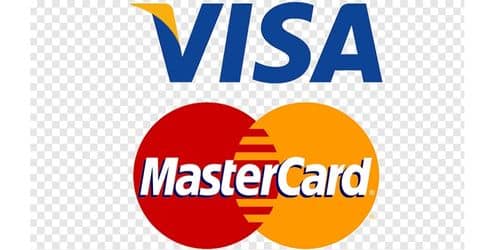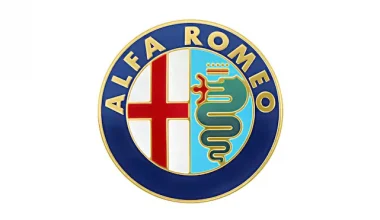Visa is an American company that has been around since 1958. It offers one of the most popular payment networks in the world. The company started in the United States and is still based there, but it has a branch in London that serves the European market. Visa is a financial services company that gives out credit and debit cards and helps people with Visa accounts send and receive money electronically. This article talks about the MasterCard and visa logo.
What is Visa?
Visa is basically the name of the American firm that owns the global payment system that provides financial services. Visa is an American corporation that facilitates the movement of money across borders using its services. It is currently regarded as one of the most expensive companies by industry specialists. It was initially conceived in 1958 as a project to issue credit cards by the Bank of America, but over time it evolved into an independent representative of the banking market.
Overview
Visa’s visual design has been stable enough, even with small changes to the logo, to make people loyal to the brand. From the shape of the letters to the color, everything about the logo shows trust, reliability, and stability, just like a logo for a credit card company should.
The gold and blue colors in the Visa logo are to remind people of California’s beautiful golden hills and blue skies, where the bank was built. They chose blue to replace gold because it represents loyalty, trust, and stability, all of which are positive attributes of the Visa brand.
Many banking and credit card companies, like PayPal and American Express, use blue in their logos because it makes people feel safe and secure. As part of a larger effort to rebrand, Visa changed its logo to what it looks like now. The long flick and color gradient in the logo makes it look like it is moving quickly.
More Information
Visa began in 1958 as a credit card program at Bank of America. It is now a separate, global business worth billions of dollars that works all over the world. It handles a lot of credit card transactions around the world, making it one of the most popular places to send money online.
In 2020, Visa processed $8.8 trillion worth of payments, which brought in $21.8 billion in net income. Visa’s main products are credit, debit, and prepaid cards, as well as business solutions and international ATM services. These are the business segments that the company can report on:
- The cost of services will be $9.8 billion in 2020.
- $11.0 billion for data operations by 2020.
- Cross-Border Finances ($6.3 billion by 2020).
- (1,4 billion dollars in 2020).
Visa Logo and Its History
Visa, an American company, offers a wide range of financial services all over the world. In 1958, the Bank of America financial empire started offering BankAmericard credit cards and the BankAmericard Service Corporation to handle them. A short time later, they made some changes to the name of the system to the well-known Visa.
In the past 40 years, the logo hasn’t changed much in terms of how it looks. The first “Visa” logo came out in the mid-1970s, and it has gone through a few small changes since then.
1958 – 1976
In 1958, the Bank of America gave its first credit card to its customers. It was called the BankAmericard. Furthermore, this was the debut appearance of the Visa logo. A round-cornered badge had a blue wordmark with a sans-serif font in the middle of a white horizontal stripe. Above the white stripe was a blue one, and below it was a yellow one. The thin, delicate shape of the symbol, which was double white and blue, gave off an air of knowledge and professionalism.
1976 – 1992
In 1976, the company changed its name to “Visa.” In the same year, there was a change in the logo to include the brand name in a thinner font. “Visa” had a lovely typeface with capital letters, and the “V “‘s” sharp serifs spread all the way to the sides.
1992 – 2000
In 1992, Visa changed the logo’s design by making the letters bigger and the curves smoother. They also went with a lighter color scheme. The left bar of the letter “V” became longer and very sharp giving it a sense of motion and passion.
2000 – 2006
The 1999 update made the wordmark bigger and the colors brighter, but the overall shape stayed the same. The central white stripe had a wider look to fit the bigger wordmark.
2006 – 2014
They made use of the new logo for the first time in 2005. Despite the fact that it was just a logo with no artwork, they had to maintain the original blue and yellow color scheme by coloring the triangle on the “V” in yellow and leaving the rest of the letters in the same shade of blue. The wordmark’s sharper edges were smoothed out to make it appear more stylish and professional.
2014 – 2021
The company stopped using its traditional color scheme as early as 2014. She took off the yellow, which stood for the sun in California, and put in the blue, which stood for the clear sky in California. The designers made use of a gradient, to make the logo more interesting.
People say that the brand got rid of yellow to get closer to its customers. When people see gold this color, they often think of unreachable wealth and power. In response, Visa’s public lending initiative tried to make it easier for more people to get loans.
The new insignia was based on the old one in every way. It had a sleek, recognizable type in a dark blue that almost looked purple. The new color scheme gave the logo new life and made the brand look more sophisticated.
2021 – Today
Visa is a company that provides financial services. In 2021, Wieden+Kennedy and Visa will show off a new brand identity. Malik Hassan Sayeed’s ads piqued people’s interest in her novel idea. With the new brand identity came a new wordmark. This is the work of Mucho, a worldwide production company.
The form hasn’t changed over time because it has become standard. The only thing the designers cared about was color. They got rid of the gradient and made all the types a bright, lively blue (#2639c3). Even though there haven’t been any big changes, people see the logo differently. Due to the simplified color scheme, VISA now looks better on digital screens. The color scheme also helps the payment company’s reputation by making it appear cheerful.
Symbol
Credit cards were the first piece of branded merchandise. In the 1980s, debit cards and smart cards came up and the four main VISA cards (Electron, Classic, Gold, and Platinum) led to 30 others. People and organizations can now send and receive money from anywhere in the world because there are so many ATMs. VISA was definitely the first step toward globalization.
The cards come in two sizes: standard and micro. The layout is pretty standard (ideal for travelers who can attach them to keychains). Most of the time, they will show information in a horizontal or vertical format (mostly on mini cards). Originally, VISA cards had blue, white, and yellow stripes, with “VISA” printed above the white stripe. The emblem took up a third of the front, which gave it a lot of attention.
The sign was easy to understand. However, the blue represents the sky, and the gold represents the bank’s gold reserve at Fort Knox, the safest place in the world to store gold.
Emblem
In 2006, changes to the logo began. Even though there were no more strips, the color scheme stayed the same. The new logo now has the name of the system written in the company’s traditional blue font on a white background. The design has a golden scratch-of-the-pen pattern that looks like both a gold blink and the first letter of the alphabet. Now, the four letters fit inside the small graphic in the bottom right corner.
A hologram of a dove in three dimensions is also very important. It’s a smart and easy way to keep your card safe since the picture hides part of the card number. The hologram colors will match the colors of the cards they go with. Most basic VISA cards, like Electron and VPay, don’t have holograms. Instead, they have a picture of a dove and a stylized “V” on the front, which you can only see under UV light. By not paying for things you don’t need, this alternative can help you save money.
The VISA logo has come to mean that the system is reliable and that cardholders from all walks of life can benefit from it. At least in the U.S., you can use it to prove who you are and get discounts. VISA cardholders in a wide range of other countries can get extra benefits like cumulative bonuses and other things.
Font and Color
The main Visa badge’s bold, slightly italicized sans-serif letters are made with a custom typeface with small, unique parts in two of the letters. The Visa logotype most closely resembles dT Ampla Bold italic, with the “Vleft” bar being longer and sharper and the upper corner of the “Aleft” around it.
The visual design of the Visa brand is based on a bright, deep blue that is both modern and energizing. It suggests speed and mobility while also making the company look very confident and trustworthy.
The History of Visa
Visa’s first logo, which came out in late 1966, was made by Landor and Associates, a branding firm. The current Visa logo is based on the logo that Lippincott’s design team created in 1992. However, part of the logo was the word “Visa,” which had a blue sans-serif font.
The Visa International Service Association owns the Visa brand. Also. More than 20,000 financial institutions worldwide own Visa Inc., and these institutions have the right to issue Visa credit cards under their own brand names, such as Wells Fargo Visa and Bank of America Visa.
Visa International cardholders do not get credit either directly or through Visa International. Member banks issue Visa cards, and each sets its own rules for use (such as the annual cost of having a Visa card, interest rates charged on unpaid credit balances, and late payment penalties).
Member banks also have to reach out to businesses and ask if they accept Visa cards. They also have to make sure that businesses have the technology they need to make Visa purchases. Even though each member bank competes to get new Visa cardholders, they all work together to make sure that they can use all Visa cards from any member bank at participating stores.
Visa International is a very important part of the global payments system because it helps connect stores and customers. It is in charge of the worldwide, always-on electronic payment network, which they use to pay for all purchases. Also, Visa International is in charge of marketing and public relations for the Visa name. Visa, on the other hand, makes most of its money from the fees it charges its member banks.
Visa Origins
The first electronic payment card called a “BankAmericard,” was issued by the Bank of America in 1958. This is thought to be the “birthday” of the Visa brand. In 1966, the Bank of America began letting other banks in the United States use its BankAmericard.
In 1970, Bank of America gave National BankAmericard, Inc. (NBI) control of the BankAmericard credit card system. NBI then became a consortium in which all issuing banks had equal ownership. Dee W. Hock, who worked for the National Bank in Seattle, oversaw the early stages of the organization.
The BankAmericard credit card program began to grow overseas in a big way in the early 1970s. Due to partnerships with international banks, BankAmericard got many different names. These were Bancomer in Mexico, Chargex in Canada, Barclaycard in the UK, and Sumitomo Card in Japan. Since everyone could say “Visa” the same way, it took the place of “BankAmericard” and its related cards in 1976.
Visa has been around for more than 40 years, and in that time it has grown by leaps and bounds, using new technology to make its services easier to use, safer, and faster. For most of the time it has been around, Visa has been more successful than American Express, MasterCard, and Discover.
Find Out More
Visa’s official support of the Olympics was one of the best marketing moves the company has ever made. However, the company agreed to pay a big sponsorship fee in exchange for the right to use only its debit and credit cards to buy tickets, souvenirs, and other things at the Olympics.
Also, ATMs at official Olympic venues, like the Olympics Complex, would only accept Visa. Visa would be the only credit card company with an Olympic logo. This exclusive deal helped Visa’s brand recognition worldwide until the 2012 London Olympics.
In the 1980s, Visa also greatly expanded its services by partnering with Plus System, one of the largest ATM networks in the United States, to give cardholders instant access to cash. In the late 1980s, Visa became the most popular debit card in the United States because it made a deal with Interlink, which was the largest network of stores and restaurants that took debit cards.
Visa made life easier for its customers by letting them use their debit cards for everyday things like buying groceries and gas. However, as debit card use and e-commerce grew rapidly in the 1990s, Visa turned its attention to using new technology to improve the speed, safety, and security of its own payment processing network.
Visa is accepted in more than 200 countries and regions around the world for online purchases made on cards, tablets, mobile devices, laptops, desktop computers, iPhones, and iPads. Even as Visa adds new features, its main goal of making it easy for people all over the world to send and receive money stays the same.
What Does the Visa Logo Mean?
The colors blue and gold in the logo represent the blue sky and golden hills of California, where the Bank of America was founded.
In 2005, the company got rid of the horizontal stripes and went with a clean white background, the name Visa in blue, and an orange flick on the “V.” In 2014, they had to remove the orange flick on the logo and replace it with a blue gradient. But in 2015, Visa Debit and Visa Electron cards got the gold and blue stripes back. The stripes are not part of the company’s logo, though.
Visa is the name of both the payment network and the American company that helps people with their money. It makes it easier for money to move around the world. However, it is now one of the most expensive businesses in the world, according to experts. It began in 1958 as a credit card program run by Bank of America. Since then, it has grown into a fully independent part of the banking industry.
Master Card Visa Logo
The company name is in the center of the new Master Charge logo, which is made up of two red and ocher circles that overlap. To maintain consistency, they had to shrink the “I” icon and place it in the bottom right corner. The old Mastercard is now “Master Charge.” The government stopped using the letter I in 1980.
In terms of size, MasterCard is the second largest payment network in the world after Visa. American Express and Discover are two more important payment networks. However, Mastercard is a group of banks that work together to accept payments made with credit, debit, and prepaid cards that have the Mastercard name on them.
Mastercard uses its own worldwide payments network, which it calls its core network, to handle transactions between a Mastercard account holder, a merchant, and each of their respective financial institutions. However, they accept all of the major credit, debit, and prepaid cards.
Explanation of Mastercard
In 2020, MasterCard processed $6.3 trillion worth of payments, which brought in $15.3 billion in net income. Mastercard offers a wide range of services, such as credit cards, debit cards, prepaid cards, and business goods. Payment Solutions is the reportable business segment for Mastercard. This shows how well the company is doing in the U.S. and other places.
Both Visa and MasterCard logos make most of their money from service fees and transaction fees. Still, it makes the charges look different. The percentage of transaction data in foreign currencies determines the Mastercard service fee. Issuers pay small, fixed switching costs per transaction to process data.
Mastercard has three different levels of credit cards (standard, global, and world elite). Mastercard is trying to get more people all over the world to use and like its brands. Because of this, everyone involved, including banks, shoppers, governments, and businesses, gets more value.
Its headquarters are in Purchase, New York. Its primary function is to settle financial transactions made with “Mastercard” debit, credit, and prepaid cards, regardless of where they use them to make purchases. In 2006, Mastercard started to trade on the stock market.
In response to the BankAmericard, which became Visa and is still Mastercard’s biggest rival, regional bank card organizations had to create the Mastercard (initially Interbank, then Master Charge). Mastercard Worldwide is a group of more than 25,000 financial institutions that started out as a cooperative.
Evolution of the Master Card Visa Logo
Here are some facts about the Visa Mastercard logo:
1967
In the late 1940s, some U.S. banks gave their customers a Mastercard, a form of paper money that they could use like cash at participating stores. Over the next 10 years, a number of franchises grew in which a single bank in a big city would let a small number of stores accept cards as payment. When one of these groups came together in 1966, it was called the Interbank Card Association (ICA), which later became MasterCard International.
No single financial institution ran ICA. Instead, member committees were formed to monitor the progress There were rules in place for authorizing, clearing, and settling transactions. They were in charge of the company’s marketing, security, and legal matters, among other things. The
1970
In 1968, ICA made a deal with Banco Nacional in Mexico. This was the start of what would become a global system. In Europe, they joined forces with Eurocard in the fall of the same year. In that same year, the first Japanese people joined the group.
By the late 1970s, ICA had members from as far away as Africa and Australia. ICA changed its name to MasterCard International to better show that the company wanted to grow all over the world. During the 1980s, businesses grew even bigger, expanding into Latin America and Asia. In 1987, the People’s Bank of China gave out the first MasterCard, making it the first payment card in the country. In 1988, the Soviet Union was the first place where people could use a MasterCard.
1985
In 1985, they bought the Cirrus ATM network, and in 1991, we started the first online POS debit network, called Maestro. However, after merging with Europay International in 2002, they changed from being a membership organization to a private share corporation.
2002
Between 2009 and 2012, MasterCard made a lot of smart purchases to show its commitment to innovation. Some examples are DataCash, Travelex’s prepaid program management division, which is now called Access Prepaid, Trevica, and Truaxis. In 2010, Orbiscom changed its name to MasterCard Labs so that it could be the company’s place for new ideas to grow. In 2013, they bought the processing company Provus in Turkey.
They use cutting-edge research and analysis of big data to make electronic payments faster, safer, and easier for people all over the world. The company does business in more than 210 countries and territories around the world, and it is still growing in a market where 85 percent of people still use cash and checks. The vision of Mastercard is that people will have better ways to pay for things and won’t need cash.
2016
They showed off a new corporate identity for the company that was simplified, updated, and made better for digital settings to show that they are ready for the future and are optimistic about it. With this rebranding, Mastercard is establishing itself as a leader in the financial technology industry and a link between people and uncountable opportunities.
2019
The name “Mastercard” was taken off the company’s well-known Brand Mark in January of this year. The famous red and yellow circles that make up the “Mastercard Symbol” can now stand on their own. Mastercard has made a brand design that can be changed and works well in a digital setting so it can keep up with the changing needs of consumers and businesses.
Master Card and Visa Logo
At the moment, there are only four big players in the market for electronic payments. Visa, Mastercard, American Express, and Discover handle more than 90% of all credit card transactions around the world. Visa and MasterCard don’t give out cards or loans, so their products are different from each other.
This means that every Visa and Mastercard that has ever been given out was made possible by a partnership between the two companies. Even though neither business lends money or gives out cards, they work together to give customers as many ways to pay as possible.
Visa and Mastercard: What You Need to Know
Visa and MasterCard are the only two payment processing networks that work in all three parts of the market. As network processors, both of these businesses have an advantage, but they go about their work in different ways.
Visa and MasterCard are both traded on markets open to the public. Visa (trade symbol V) and Mastercard (trade symbol MA) have the most valuable market caps (market caps as of May 18, 2021). Even though neither company has a traditional bank, they can both offer credit cards and other types of loans under different names.
The business plans of the two companies have a lot in common. Financial institutions like banks and credit unions must become Visa or MasterCard partner members in order to sell cards to the general public. The bank then sells cards to people and businesses, either on its own or in partnership with other businesses like hotels, airlines, and stores.
Visa and MasterCard both make most of their money from service and data processing fees, but each company defines and sets up these fees differently. The card issuer is charged service fees based on the number of cards used.
Does Visa Have a New Logo?
You would be right to notice that they have a new logo. It looks like an equal sign, so it stands out.
What Is the Current Visa Logo?
Visa’s new company philosophy is that “economies that include everyone, everywhere, help everyone, everywhere.” This is shown in the updated logo by the equals symbol. The company’s stated goal for the rebranding is to “make sure it is known as more than a credit card company.”
Why Does Visa Use Blue in Their Logo?
The gold and blue colors in the Visa logo are meant to remind people of the beautiful golden hills and blue skies of California, where the bank was first started. Blue was chosen to replace gold because it is associated with loyalty, trust, and stability, which are all good things about the Visa brand.
Why Did Visa Change Its Logo?
Visa, which has been around for more than 60 years, has changed its look to get ready for the “future of commerce,” which the company thinks will be mostly done online. This change was necessary because most customers still think of the company mainly in terms of credit and debit cards made of plastic.
What Is the Bird on Visa Cards?
The Ultra-Sensitive Dove is a picture of a dove that can only be seen with a black light. This gives older Visa cards an extra layer of security. (On newer Visa cards, the UV dove has been replaced by a tiny V on top of the Visa logo.) Cards that don’t have the Premium Visa Brand Mark (PVBM) must have the dove hologram since the PVBM has stronger anti-counterfeiting security features than any previous version of the dove hologram.
What Does the Visa Logo Represent?
The wordmark that represents Visa is all capital letters and uses a sans-serif font. The only thing that could be considered a drawing element is the V-shaped extension that looks like a wedge on the left side. Despite the fact that they were a part of the emblem in the past, the symbols have been updated to have a more contemporary appearance in the most recent iteration.
Why Did Visa Change Its Logo?
There have been multiple iterations of the Visa logo. The first modification was implemented in 1976, and it was a rebranding of the financial structure that brought about the change. The disappearance of yellow is associated with yet another shift in appearance. The management decided to stop using it in 2014 in order to demonstrate that the system is accessible to every person on the planet despite the color yellow’s historical association with the precious metal gold. Only blue, the color of the sky, which is recognized by everyone, has been preserved by the designers.
How Do You Identify a Visa?
The visa number, which is also referred to as a visa foil number, is a crimson number that is typically printed on the bottom right side of visa documents that were issued more recently. The visa number for the United States typically consists of eight different numeric characters.
Who Created the Visa Logo?
- Landor and Associates is the company.
Late in 1966, the first version of the Visa logo was released, and the brand design company Landor and Associates was responsible for its creation. The original logo for Visa, which was designed in 1992 by the Lippincott design studio, served as the basis for the current version of the logo. The name “Visa” was incorporated into the identity using a sans serif font in blue.
Does Mastercard Use Visa?
Cards issued by Visa are incompatible with the Mastercard network, and the reverse is also true. For instance, if a shop only accepts Mastercard as a form of payment, you won’t be able to use your Visa card to buy anything there. Different financial institutions may offer different payment terms, interest rates, and rewards programs; however, neither Visa nor Mastercard are inherently superior.
Is Visa Stronger Than Mastercard?
Both are risk-free and provide their users with comparable advantages. Although VISA has a little higher market share as well as a greater number of transactions globally, both VISA and MasterCard are equally well-accepted by merchants. MasterCard has a relatively higher market share in the United States.
Why Are Banks Changing From Visa to Mastercard?
The bank claims that the move is being made to improve customer service and not because of fees associated with visa charge cards. As Natwest follows in the footsteps of Santander and First Direct, a significant number of Royal Bank of Scotland account holders are going to have their existing Visa debit cards switched to Mastercards in the near future.
Conclusion
Visa is the name of one of the most-used payment systems in the world. It was started in California in 1958. Visa debit and credit cards are now issued by banks all over the world. This makes Visa a very valuable company.
Related Articles
- WEBSITES THAT ACCEPT APPLE PAY: All You Should Know and How It Works.
- FIRST CREDIT CARD: What It Is and All You Need to Know
- CREDIT CARD ANNUAL FEE: Best Travel Credit Card Annual Fee Explained
- Check Card: How to Check Card Visa, American Express, Stimulus (+ free tips)
- 7 Small Business Grants Applications 2023






